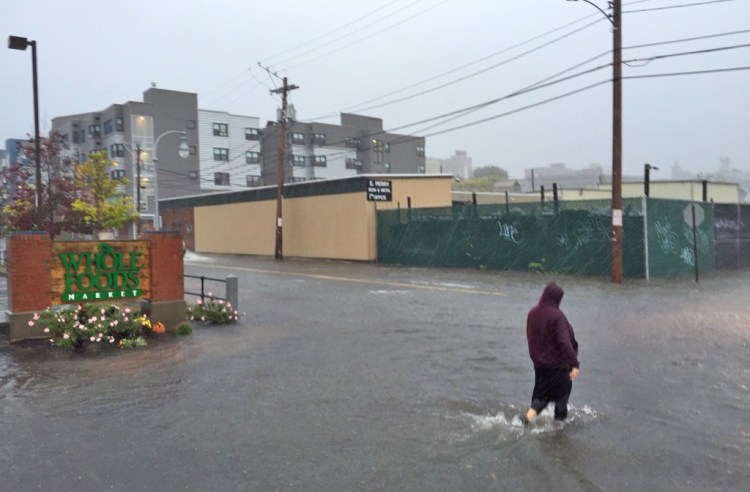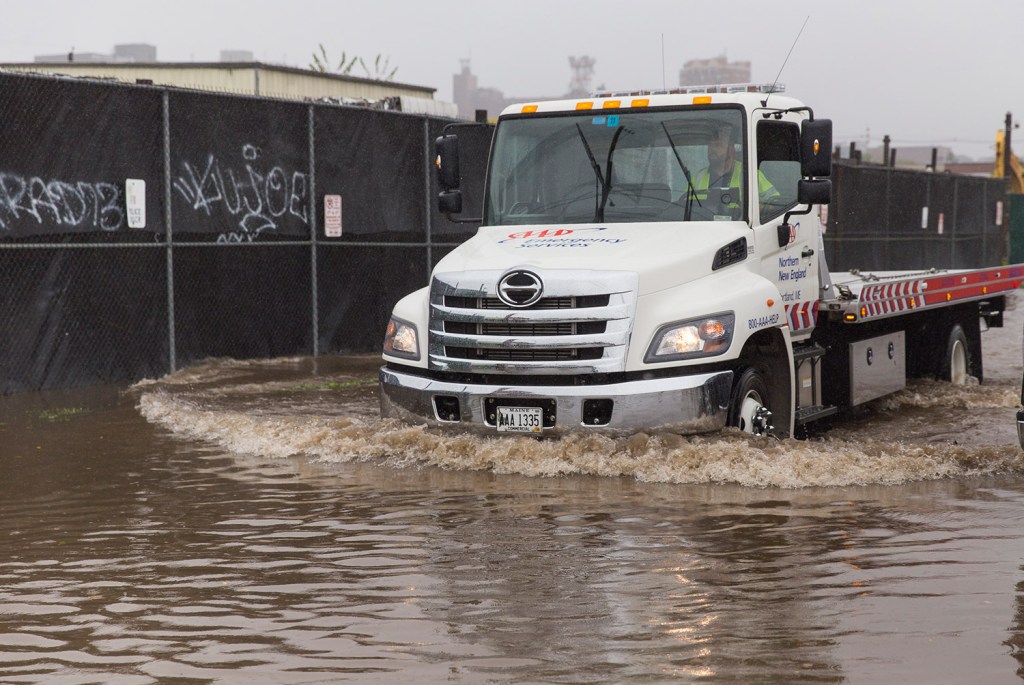About 40 people at a meeting in Portland’s Bayside neighborhood Wednesday evening were told to begin preparing for how rising sea levels associated with climate change will affect the city’s lowest-lying neighborhood.
Though the climate change scientists invited to the meeting were short on specific recommendations, they were confident about one thing: Sea level increases will have an impact on Portland and around the world.
“There is no place that is going to be safe from climate change so we may as well start dealing with it now, right at home,” said Dr. Cameron Wake, a climate scientist at the University of New Hampshire.
Though the changes could take decades to occur, Wake said, the city should take steps such as regulating new construction in areas like Bayside to account for rising sea levels.
“If you are going to build something in Portland, you need to make sure it’s resilient,” Wake said. “Sea levels are going to rise for decades and for centuries and generations of people are going to have to deal with the problem.”
The Bayside Adapts community forum was organized by Troy Moon, the city’s sustainability coordinator. Bill Needelman, the city’s waterfront coordinator, also attended the meeting at the Mayo Street Arts Center.
The Bayside neighborhood abuts Interstate 295 and is located near Portland’s Back Cove. There are several businesses, including the Whole Foods Market, as well as single-family homes and apartment complexes in the neighborhood off Marginal Way and Franklin Street.
 Rising sea levels have already affected Bayside. In September 2015, heavy rains combined with an astronomical high tide flooded several streets near Whole Foods, Moon said. Dozens of vehicles were damaged by flood waters.
Rising sea levels have already affected Bayside. In September 2015, heavy rains combined with an astronomical high tide flooded several streets near Whole Foods, Moon said. Dozens of vehicles were damaged by flood waters.
“When you stand on the Maine State Pier you are at least four feet higher than you would be in many parts of Bayside,” Needelman said in a statement issued by the city. “It’s the lowest part of the city.”
The city of Portland has identified climate change as “one of the greatest challenges the city has faced since the great fire of 1866,” Needelman said.
Moon said at least two and possibly three more climate change forums will be held over the next several months as the city develops plans for how Bayside residents and business owners can prepare.
Wake, who has served as director of Climate Solutions New England since 2007, according to his LinkedIn page, said evidence of climate change is everywhere and it is mounting.
Arctic sea ice reflects incoming solar radiation, serving as a kind of air conditioner for polar regions. But, as temperatures have begun to rise, sea ice has diminished, he said.
There is enough ice in Greenland to cause a 20-foot rise in sea level if it were all to melt. The Jakobsharn Glacier is already melting and dumping water into the North Atlantic, Wake said.
Climate scientists have come up with three scenarios for how much sea level could increase by 2100, Wake said. The best case scenario is a rise of 1.6 feet. The worst case scenario envisions a rise of 6.6 feet.
Send questions/comments to the editors.





Success. Please wait for the page to reload. If the page does not reload within 5 seconds, please refresh the page.
Enter your email and password to access comments.
Hi, to comment on stories you must . This profile is in addition to your subscription and website login.
Already have a commenting profile? .
Invalid username/password.
Please check your email to confirm and complete your registration.
Only subscribers are eligible to post comments. Please subscribe or login first for digital access. Here’s why.
Use the form below to reset your password. When you've submitted your account email, we will send an email with a reset code.